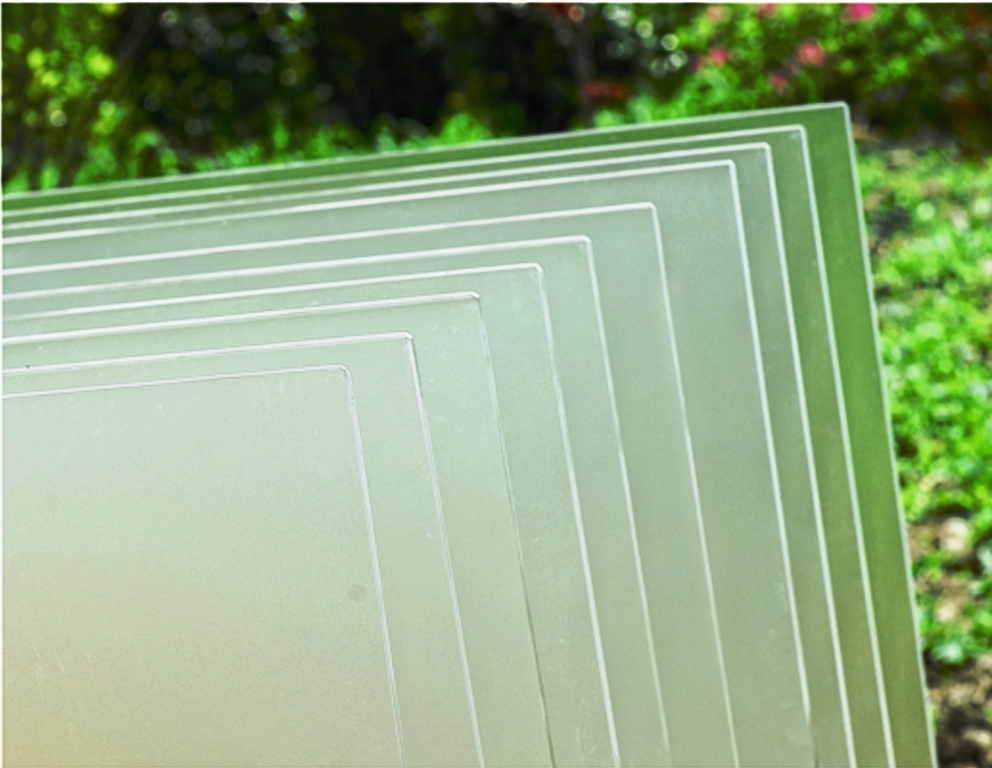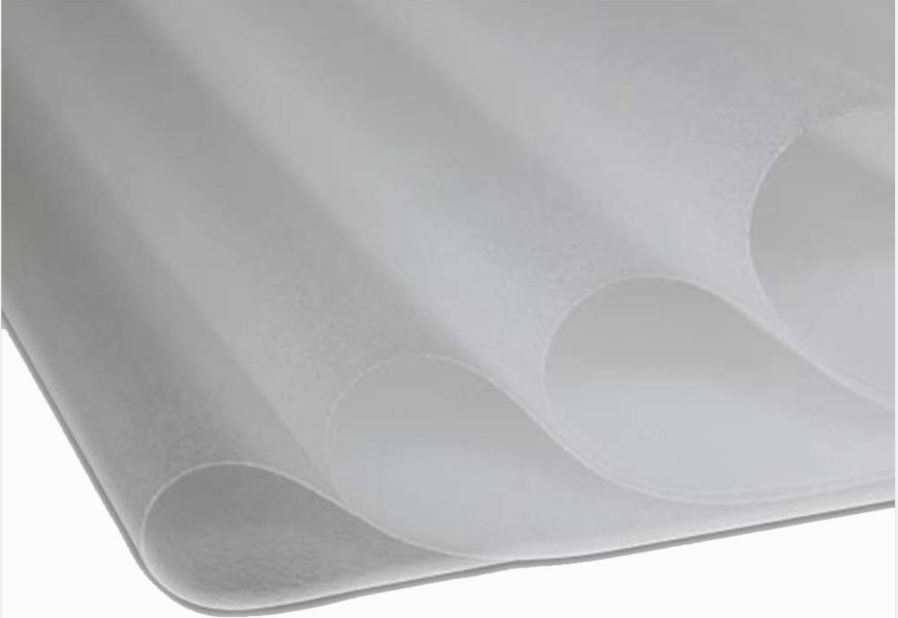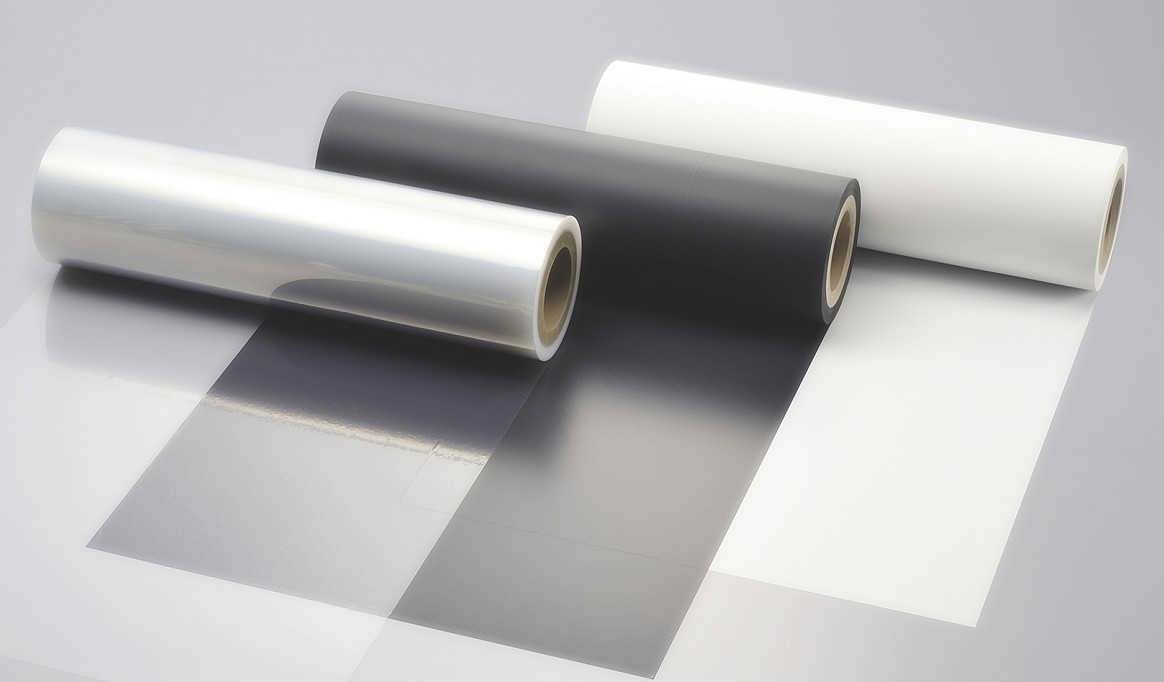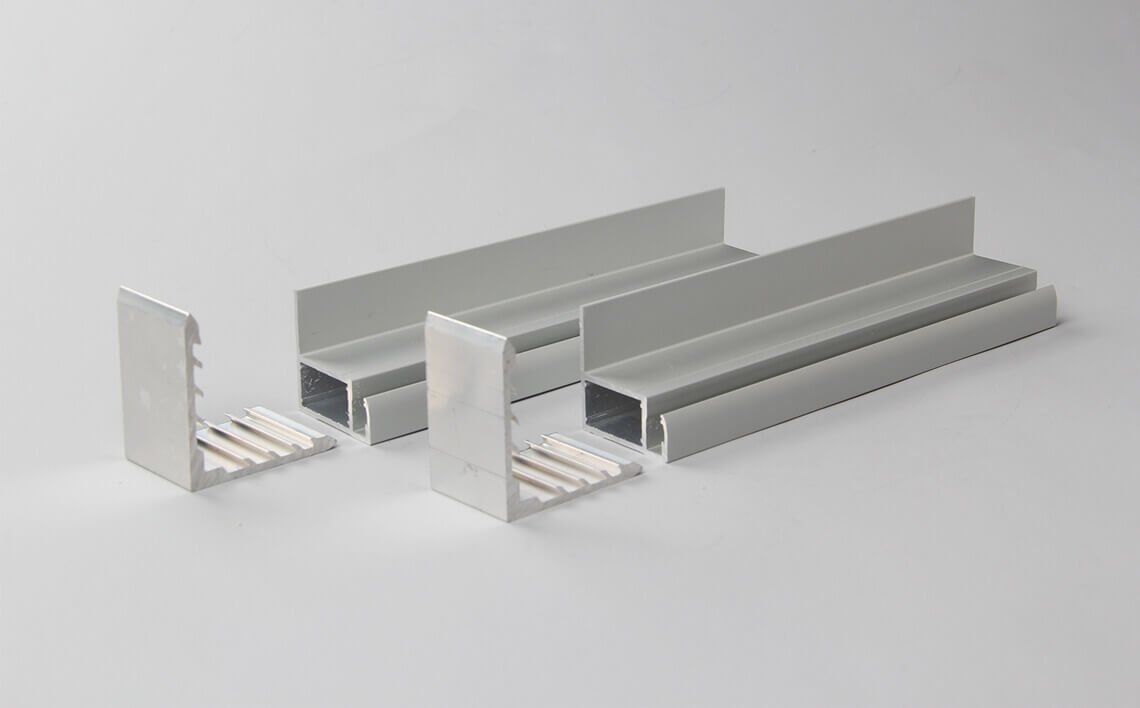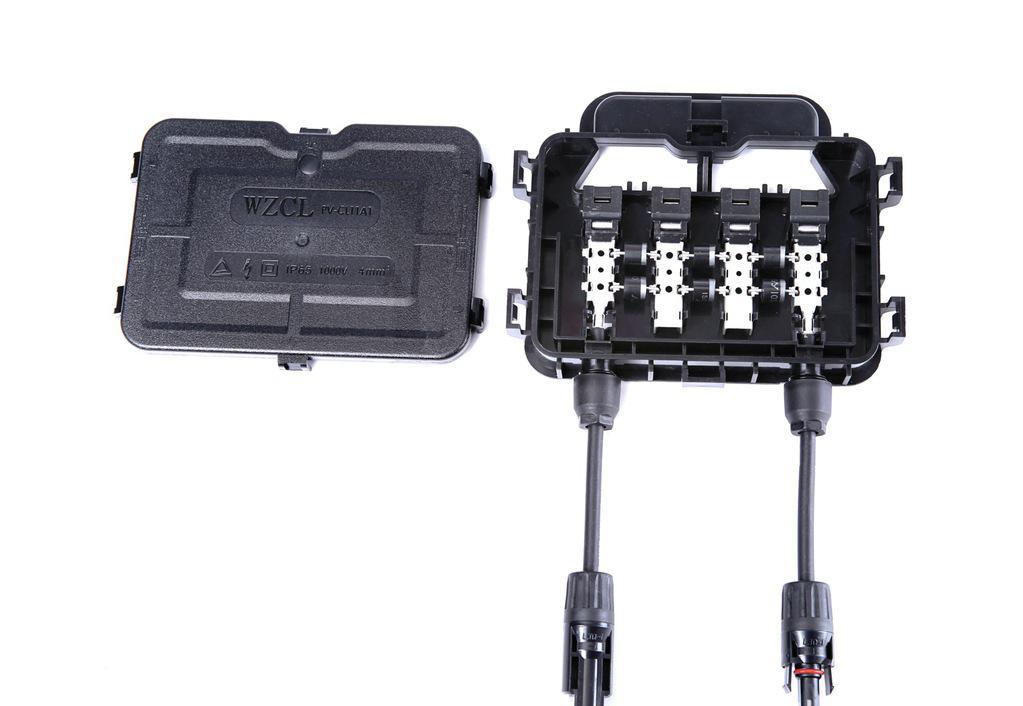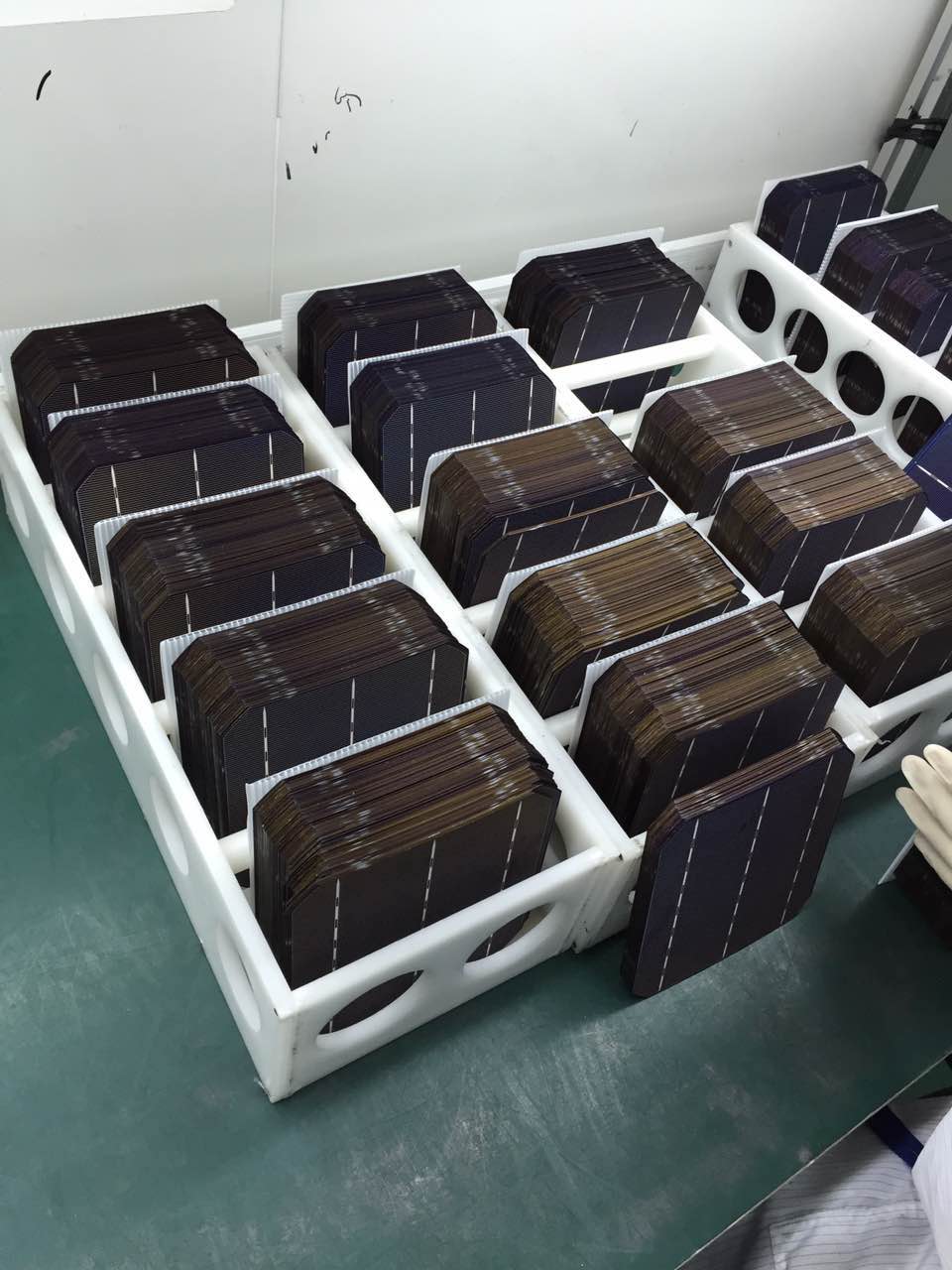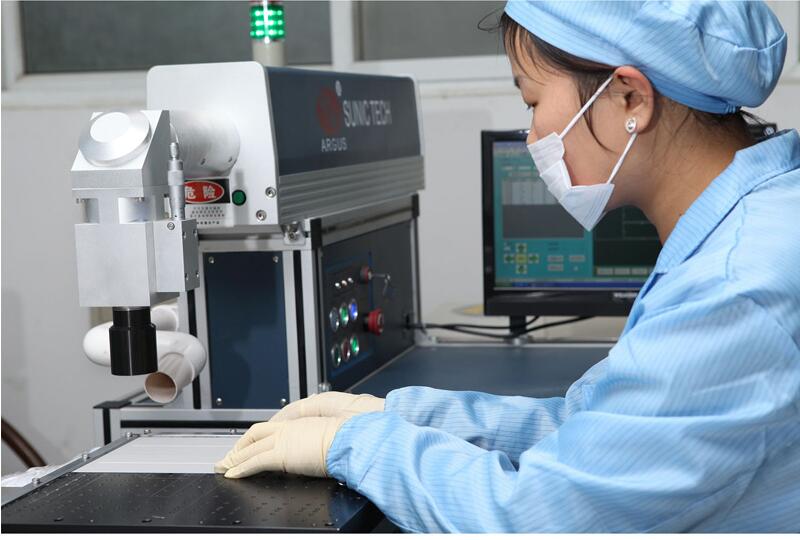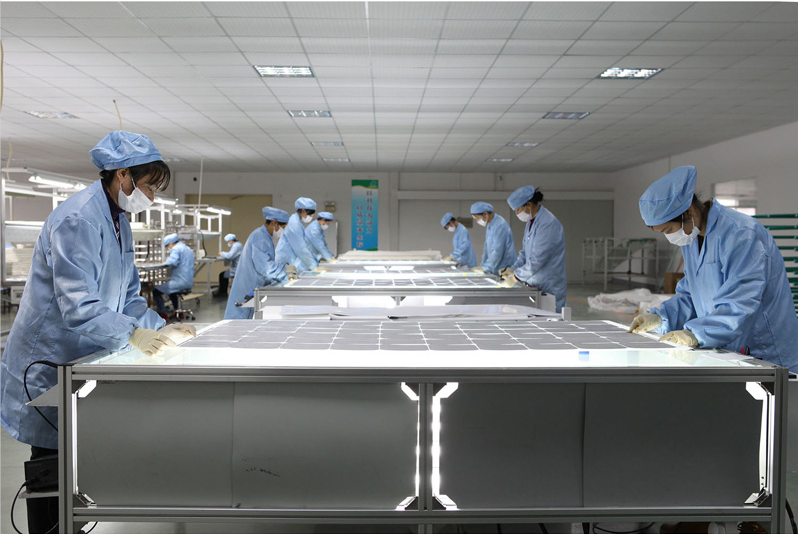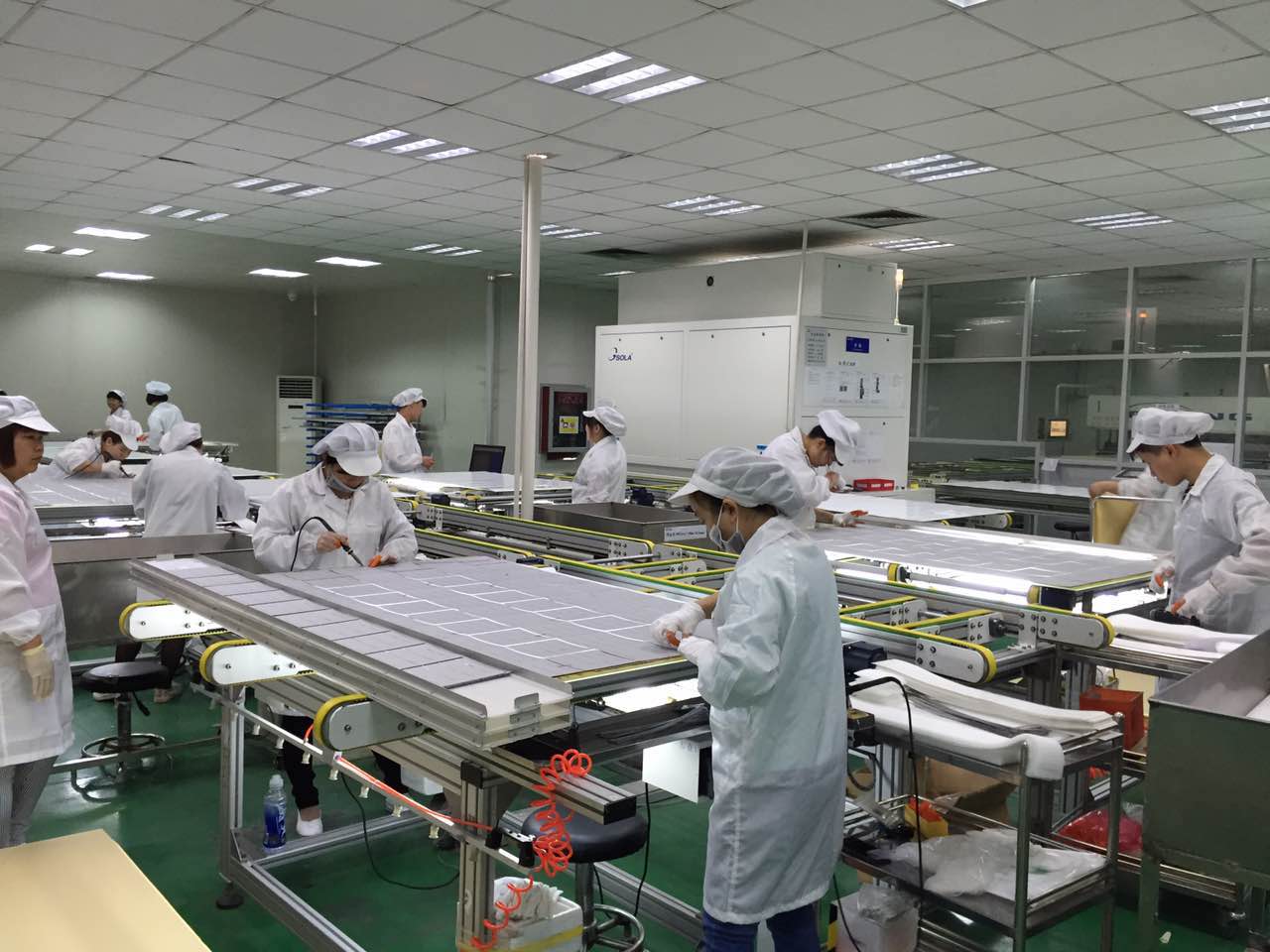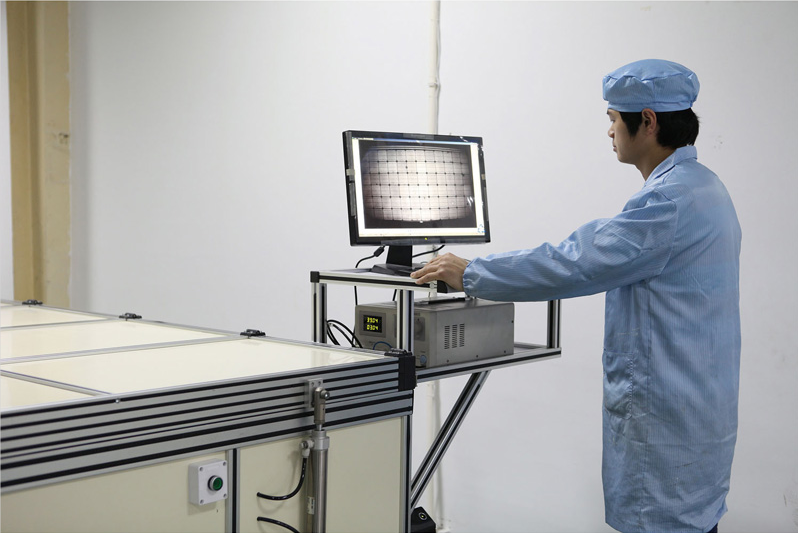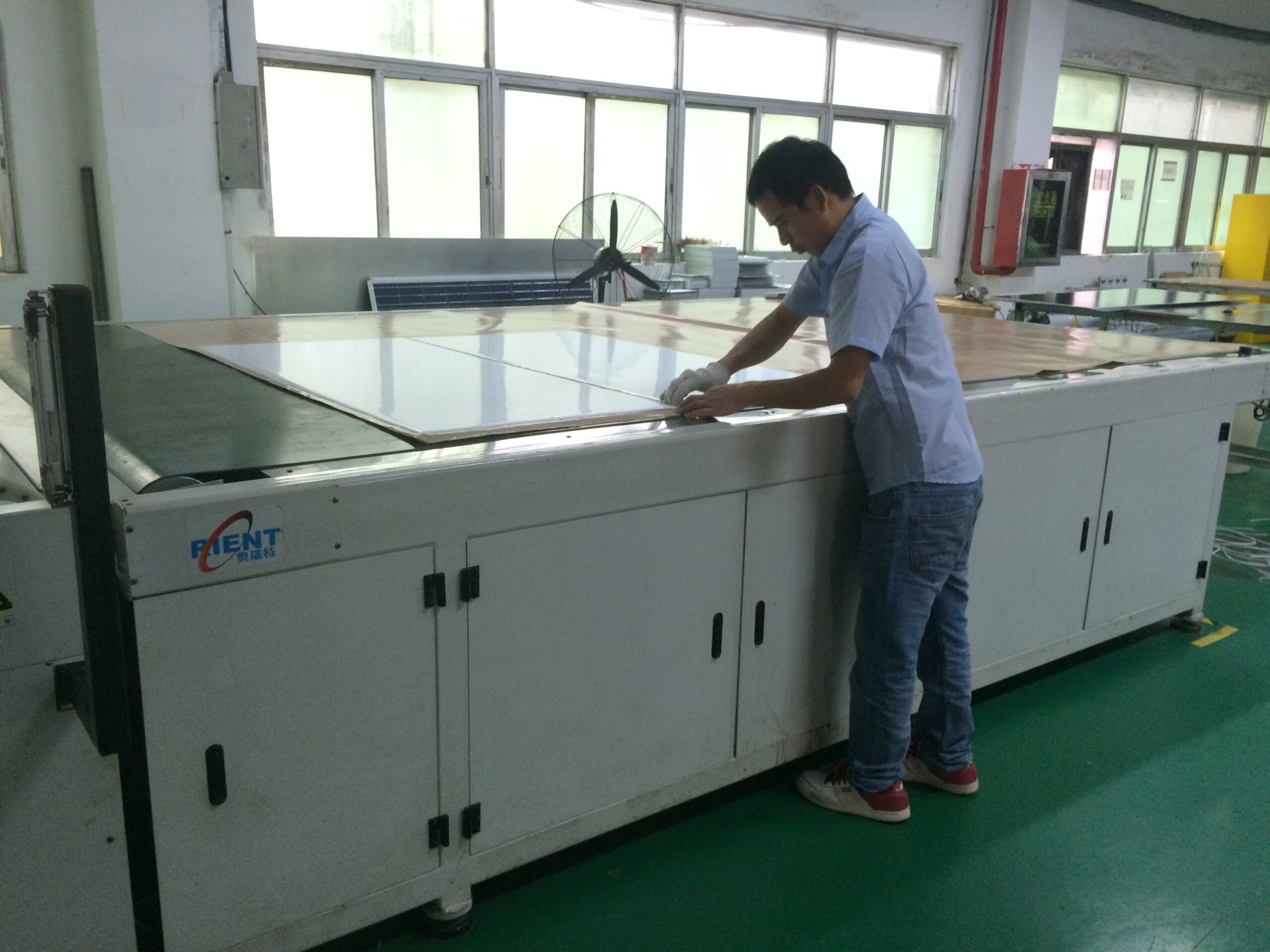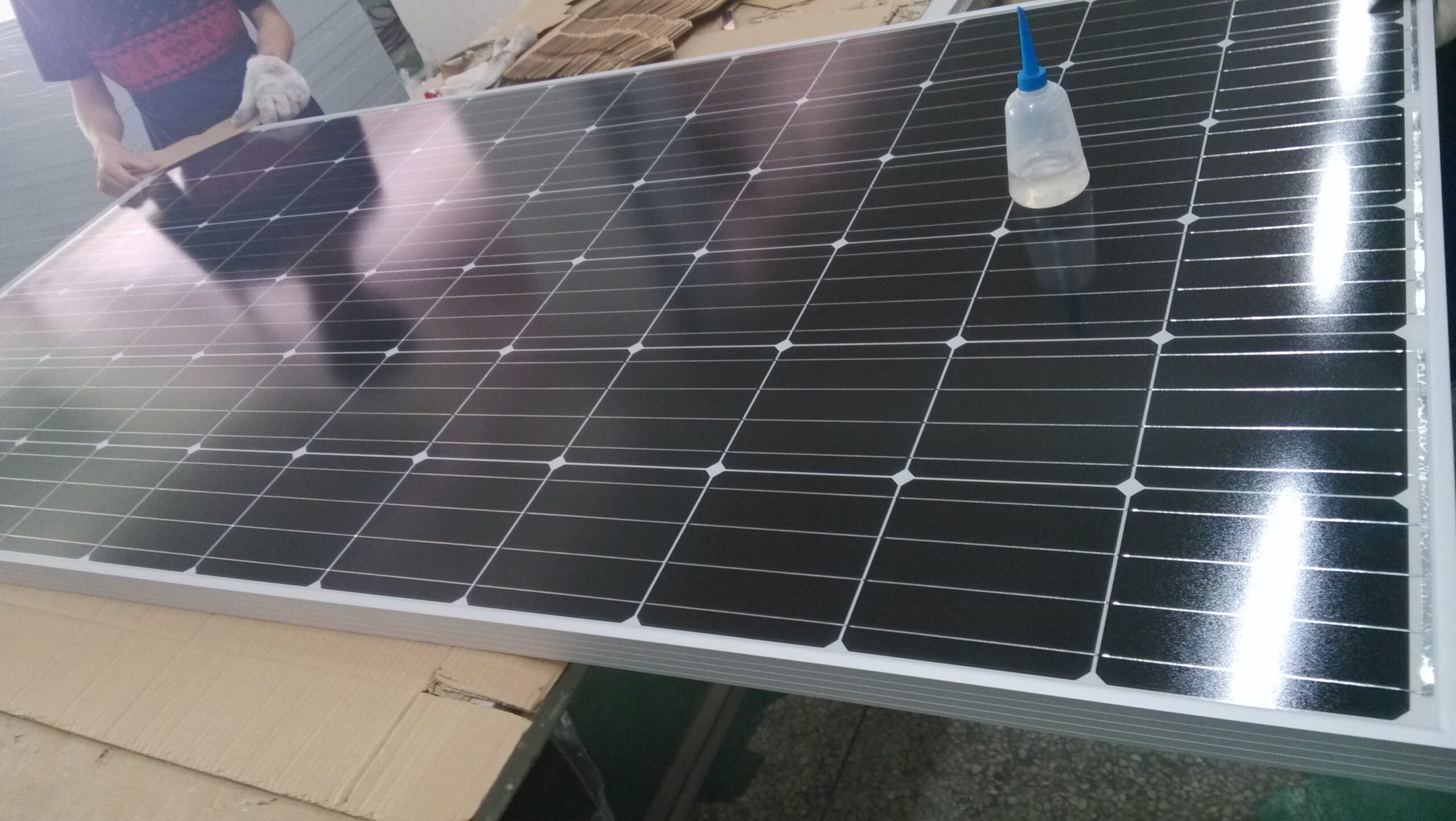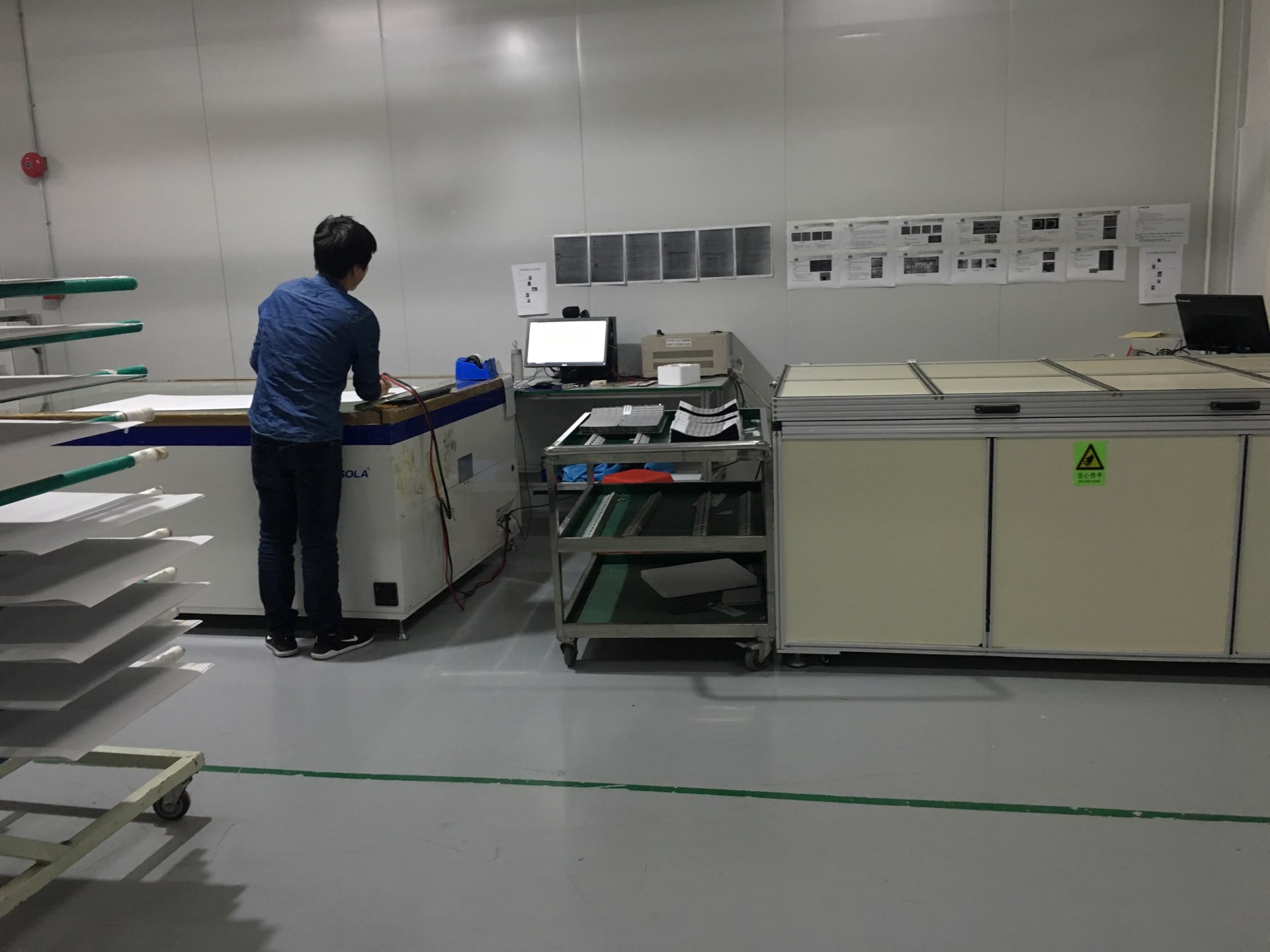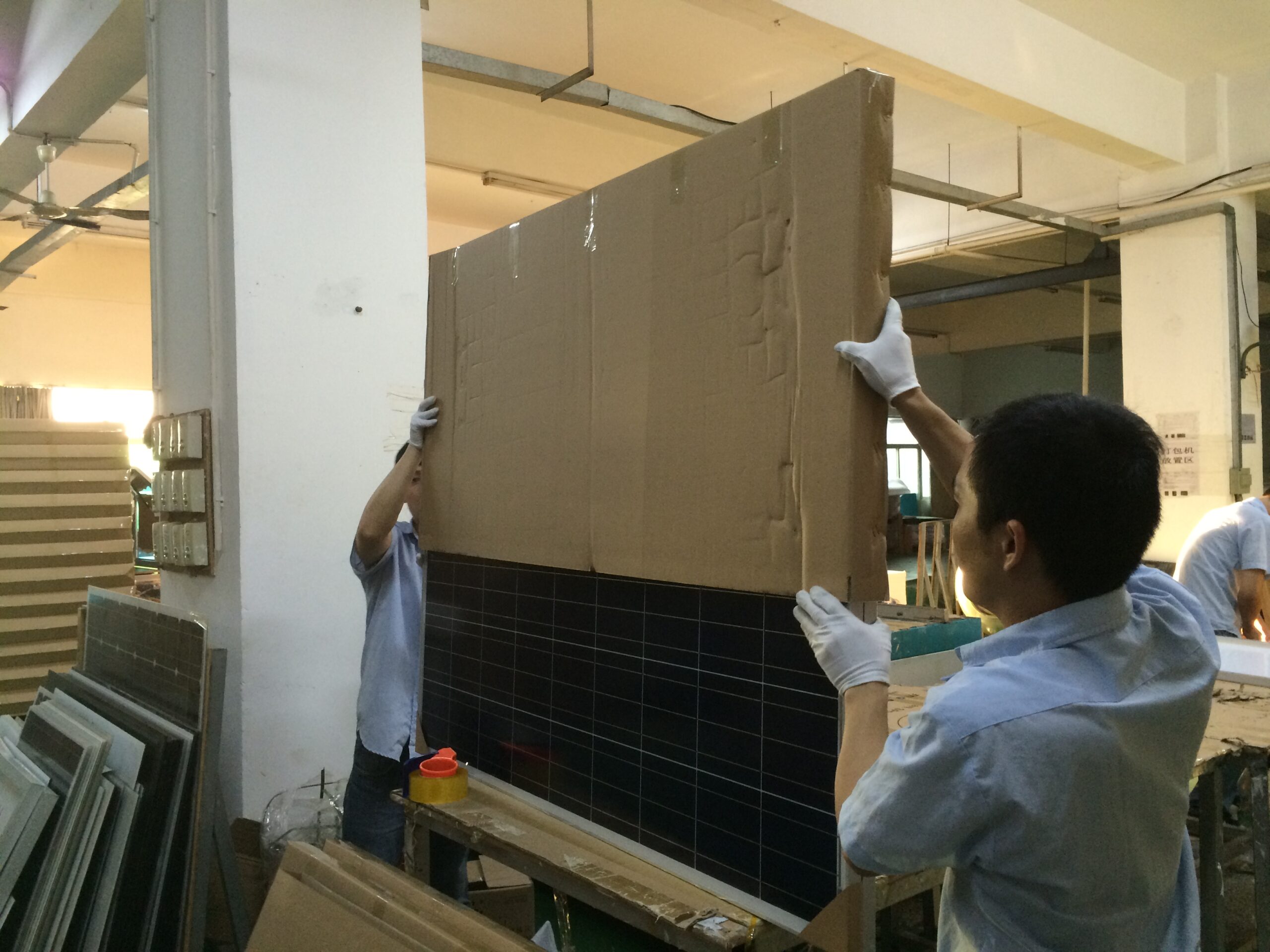In recent years, the solar panel price is getting down, more people are beginning to use solar panels. So how are solar panels produced? As a Chinese solar panel manufacturer for a long time, we will talk about it from below 3 aspects:
1.Raw materials
Tempered glass:
The main function is to protect the solar cell. It has high transmittance (>91%), high-temperature resistance, corrosion resistance, impact resistance.
EVA:
It is to bond and fix toughened glass and solar cells. Its quality affects the service life of the solar panel. For example, if the bonding degree of EVA glue is not up to standard, the bonding strength of EVA with toughened glass and backsheet is not enough, it will cause the premature aging of EVA, affects the service life of the solar panel.
Solar cell:
Solar cell is one of the most important raw materials. Its main function is to generate electricity. There are mainly mono and poly solar cell. Mono has high efficiency than poly. Solar panel factories mainly use mono solar cells.
Solar cells have A, B, C, D grade. A grade is the highest conversion efficiency grade. The solar panels produced with A grade solar cells have the highest quality. Qualified solar panel manufacturers are using A grade solar cells.
Some of our customers have purchased solar panels produced by B, C and D grade solar cells before. Their feedback is that quality is very poor. They are usually complained by their customers. That has a bad impact on their reputation. Later, they bought high-quality solar panels produced by A grade solar cells from us.
In recent years, solar cells upgraded from 156mm to 166mm, 182mm, 210mm, etc. Its size is getting bigger and bigger, so solar panel’s dimension is also getting bigger and bigger.
Backsheet:
The solar backsheet located on the back of the solar panel to protect and support the solar panel. It has reliable insulation, water resistance, and aging resistance.
Aluminum frame:
The main function is to fix and seal the solar panel, enhance its strength, extend its service life, and help transportation and installation.
Junction box:
The main function is to connect the battery and charging control to protect the whole power generation system.
Silica gel:
It is to seal the solar panel and aluminum frame, solar panel and junction box. Keep water and other impurities away from the solar panel to avoid affecting its use.
2.Main equipment
Solar cell sorting machine
Solar cell tester
Automatic solar cell stringer machine
Solar panel IV tester
Solar panel laminator
Solar panel EL tester
Solar panel framing machine
Solar panel trimming machine
3.Production process
Solar Cell test:
Sort and test the solar cells by Solar cell sorting machine and Solar cell tester, select the same power solar cells to improve the use rate of the cells and produce qualified solar panels.
Solar cell single welding:
Connect the single solar cells in series to form a solar cell string. This step used to be operated by workers. With the improvement of technology, now have the full-automatic solar cell stringer machine, it saves labor costs and improves production efficiency. The accuracy and quality of the solar cell stringer machine determine the welding effect.
But, due to the solar cell update is too fast, the solar cell stringer machine update very quickly. Solar panel manufacturers have to buy new machine to produce the latest solar panels, this increases their cost.
Solar cell string welding:
Connect solar strings in series to form the whole solar cell strings of the entire solar panel.
Solar panel lay-up:
Lay the solar cell strings, glass, EVA, and backsheet to prepare for lamination. The laying layers from bottom to top are glass, EVA, solar cell, EVA, and backsheet.
EL test before lamination:
The EL tester is to detect the defects of solar panels, such as hidden crack, low-efficiency solar cell, black core solar cell, short circuit, fake soldering, and so on. These defects will affect the solar module quality directly.
Lamination:
Put lay-up solar panels into the laminator, suck out the air in the solar module by vacuum, melt and bond the EVA, solar cell, glass, and backsheet together, finally cool and take them out.
EL test after lamination:
The EL tester is to detect the defects of solar panels, such as hidden crack, low-efficiency solar cell, black core solar cell, short circuit, fake soldering, and so on. These defects will affect the solar module quality directly.
Trimming:
After lamination, remove the extra materials around the solar panel by trimming machine.
Framing:
Use the framing machine to install the frame for the solar panel.
Install junction box:
Install the junction box to the back of the solar panel.
Clean:
Clean the solar panel with alcohol and cotton cloth to remove dust and debris.
IV test:
Use IV tester to test the power, voltage, and current of solar panels to determine the quality is OK.
Package:
Package the qualified solar panels, put them in storage, and wait for delivery.
OK, that’s what we want to say, if we miss anything, please feel free to contact us to add, thank you very much.


